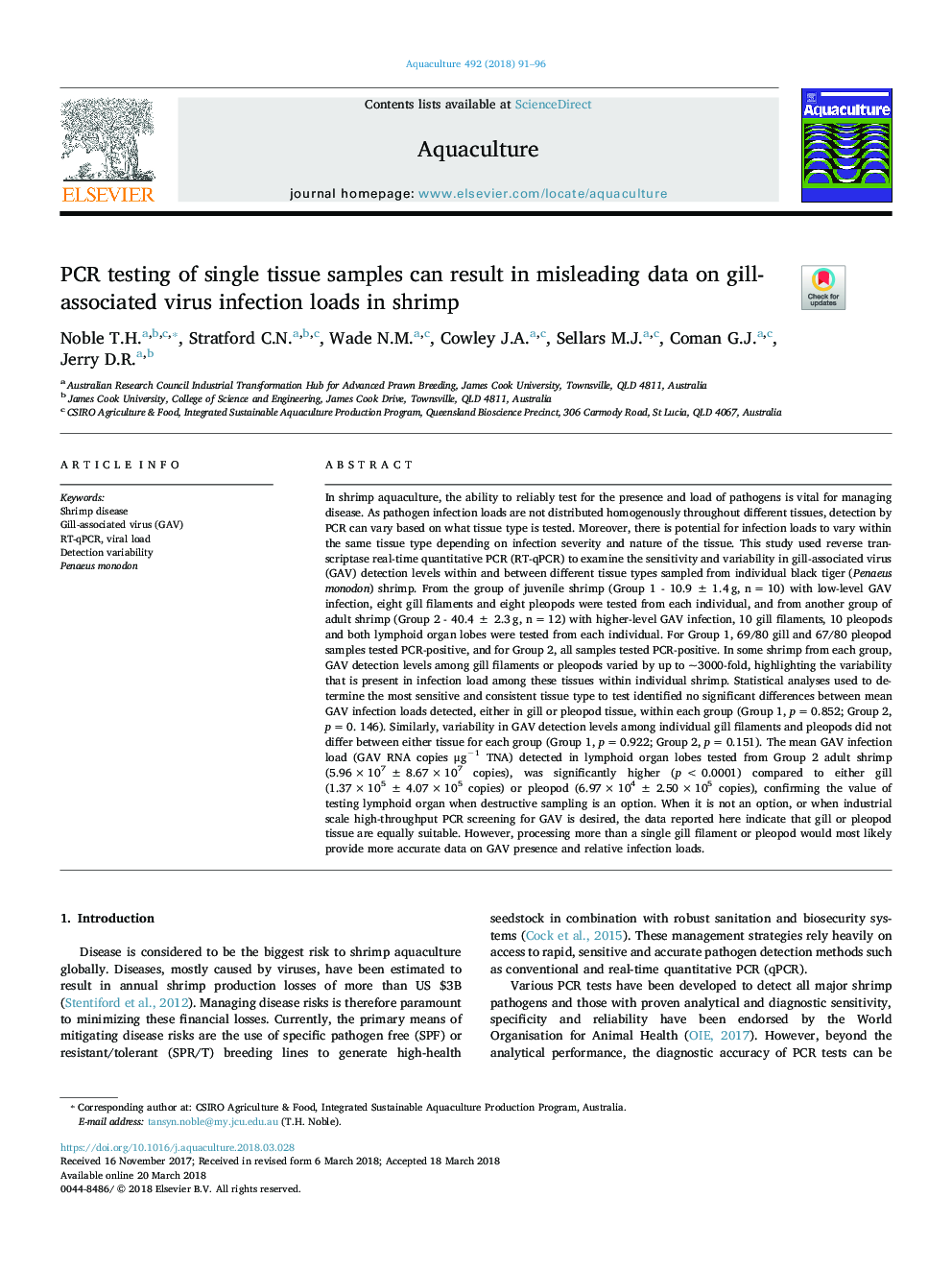| Article ID | Journal | Published Year | Pages | File Type |
|---|---|---|---|---|
| 8493174 | Aquaculture | 2018 | 6 Pages |
Abstract
In shrimp aquaculture, the ability to reliably test for the presence and load of pathogens is vital for managing disease. As pathogen infection loads are not distributed homogenously throughout different tissues, detection by PCR can vary based on what tissue type is tested. Moreover, there is potential for infection loads to vary within the same tissue type depending on infection severity and nature of the tissue. This study used reverse transcriptase real-time quantitative PCR (RT-qPCR) to examine the sensitivity and variability in gill-associated virus (GAV) detection levels within and between different tissue types sampled from individual black tiger (Penaeus monodon) shrimp. From the group of juvenile shrimp (Group 1 - 10.9â¯Â±â¯1.4â¯g, nâ¯=â¯10) with low-level GAV infection, eight gill filaments and eight pleopods were tested from each individual, and from another group of adult shrimp (Group 2 - 40.4â¯Â±â¯2.3â¯g, nâ¯=â¯12) with higher-level GAV infection, 10 gill filaments, 10 pleopods and both lymphoid organ lobes were tested from each individual. For Group 1, 69/80 gill and 67/80 pleopod samples tested PCR-positive, and for Group 2, all samples tested PCR-positive. In some shrimp from each group, GAV detection levels among gill filaments or pleopods varied by up to ~3000-fold, highlighting the variability that is present in infection load among these tissues within individual shrimp. Statistical analyses used to determine the most sensitive and consistent tissue type to test identified no significant differences between mean GAV infection loads detected, either in gill or pleopod tissue, within each group (Group 1, pâ¯=â¯0.852; Group 2, pâ¯=â¯0. 146). Similarly, variability in GAV detection levels among individual gill filaments and pleopods did not differ between either tissue for each group (Group 1, pâ¯=â¯0.922; Group 2, pâ¯=â¯0.151). The mean GAV infection load (GAV RNA copies μgâ1 TNA) detected in lymphoid organ lobes tested from Group 2 adult shrimp (5.96â¯Ãâ¯107â¯Â±â¯8.67â¯Ãâ¯107 copies), was significantly higher (pâ¯<â¯0.0001) compared to either gill (1.37â¯Ãâ¯105â¯Â±â¯4.07â¯Ãâ¯105 copies) or pleopod (6.97â¯Ãâ¯104â¯Â±â¯2.50â¯Ãâ¯105 copies), confirming the value of testing lymphoid organ when destructive sampling is an option. When it is not an option, or when industrial scale high-throughput PCR screening for GAV is desired, the data reported here indicate that gill or pleopod tissue are equally suitable. However, processing more than a single gill filament or pleopod would most likely provide more accurate data on GAV presence and relative infection loads.
Keywords
Related Topics
Life Sciences
Agricultural and Biological Sciences
Aquatic Science
Authors
Noble T.H., Stratford C.N., Wade N.M., Cowley J.A., Sellars M.J., Coman G.J., Jerry D.R.,
